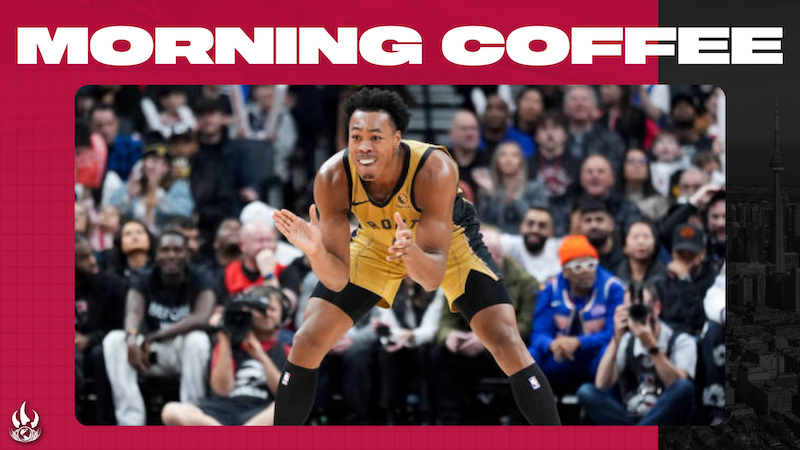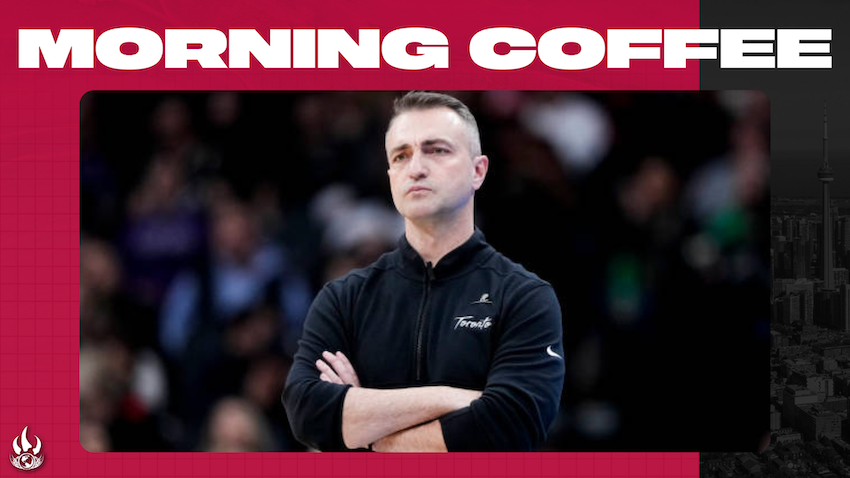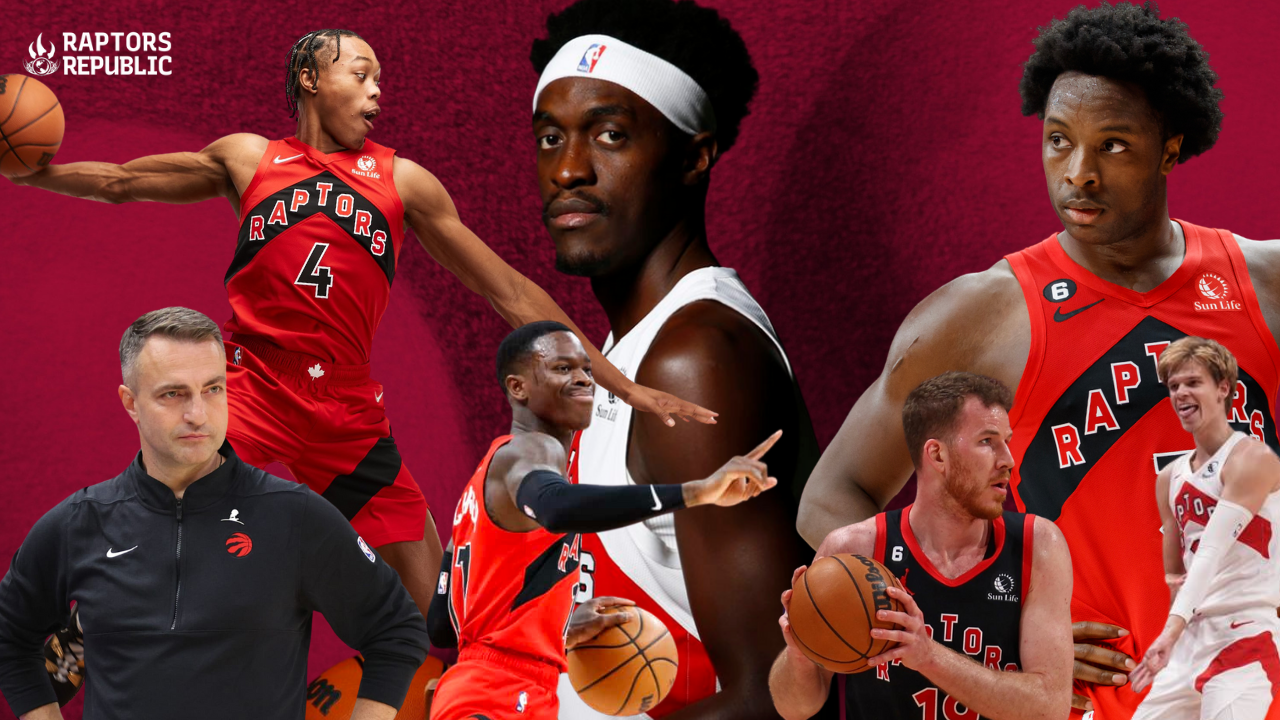Raptors head coach Darko Rajakovic says there has been no status change for Christian Koloko who has been out since Summer League with unspecified respiratory issue. He continues to do drill work with coaches after practice with no timetable for him ramping up to full practice.
— Michael Grange (@michaelgrange) December 4, 2023
Pascal Siakam: “It doesn’t feel like anything is bad, it just feels like nothing is amazing.”
Couldn’t have summed up the Raptors’ first 20 games any better myself.
— Josh Lewenberg (@JLew1050) December 4, 2023
Five questions that will define Raptors’ second quarter of season – The Athletic
1. Will Pascal Siakam bounce back from 3-point range, and can Scottie Barnes maintain from the same area?
Siakam started the season by hitting 11 of 29 3-pointers through five games. Since then, he has hit five of 52 attempts. He hit as many 3s in his fifth game of the season, a win over Milwaukee, as he has in the 15 games following that victory.
It’s a problem. The ball is going to continue to be in the hands of Barnes and Dennis Schröder a fair bit. There are other ways to get Siakam the ball, but him being at least passable from deep would go a long way to having a functional offence, particularly with Jakob Poeltl around occupying the dunker’s spot.
Since shooting 36.9 percent in his third season, Siakam has mostly landed just below that threshold, a bit worse than a league-average shooter from deep, and almost a non-factor off the dribble. This year, he hasn’t hit a single pull-up 3, and is 16-for-63 on catch-and-shoot attempts.
“For me it’s just trying to not overreact,” Siakam said. “You do one thing: You stop shooting them or the other thing you do is you keep shooting. And then it’s just basketball.”
On the positive side of the ledger, Barnes is shooting 39.8 percent from 3, including a respectable 7-for-20 on pull-up 3s, which hold outsized importance with the Raptors who have so little dynamic shooting on the roster.
Twenty games is not a big enough sample to assume either player’s statistics from 3 will hold for the rest of the season. Without Siakam improving and Barnes staying close to stable, it will be hard for the Raptors’ offence, currently ranked 22nd in the league, to get much closer to the middle of the pack.
Lewenberg: Pascal Siakam, Toronto Raptors looking to solve shooting woes | TSN
It’s not like Siakam has ever been an elite shooter but, in stretches, he has shown to be a passable one. After that sophomore season, it appeared as though the patience was starting to pay off. In 2018-19, the team’s title-winning campaign, he shot 37 per cent from deep – generally considered to be league average. While some of that may have been the Kawhi Leonard effect, he proved that his improved jumper wasn’t a mirage the following season when he doubled his attempts from 2.7 per game to 6.1 and still shot 36 per cent as the team’s No. 1 option.
However, his efficiency has dropped over the past three seasons, hovering between 29 and 35 per cent. With more movement in the offence this season, the hope was that Rajakovic’s system would help generate cleaner looks for Siakam and thus make him a more efficient player in the process, but so far, that hasn’t been the case. Through 20 games, his effective field goal percentage – which adjusts for the fact that three-point shots are worth more than twos – is the second lowest of his career.
Of course, what makes matters worse is that he’s not alone. To little surprise, given the roster construction, the Raptors have been one of the league’s worst shooting teams by just about every metric and from just about every spot on the court. They rank 28th in three-point shooting and 29th in the free-throw shooting. Recently, they’ve also struggled to convert at the rim (they’re 28th from within the restricted area over the past three games). In their most recent contest, a 119-106 loss to New York last week, they missed 26 of their 32 three-point attempts and were outscored by 30 points from beyond the arc. Somehow, it wasn’t even their worst shooting game of the season – they went 4-for-29 (14 per cent) in a loss to Portland in October.
Naturally, when the team returned to practice on Monday following a weekend off, they spent even more time than usual on their three-point shooting drills.
“There is no substitute for coming into the gym and putting the work in,” Rajakovic said. “We have an assistant coach on our staff who is [tracking the results] and a bunch of cameras over the net tracking every shot, the arch on the shot, [whether] the ball is going left to right, and we’re trying to identify those margins where we can get better. It’s a small thing but if we can improve our three-point shooting by one per cent every month or every 10 games then that will be awesome.”
It’s a question of whether or not you believe that a team without more than two or three above-average career three-point shooters on the roster can make those incremental gains, regardless of how hard they work or how many reps they get in.
In certain cases, we’ve seen that shooting can be a learned skill. OG Anunoby, the team’s most reliable shooter, was not known for his jumper coming out of school. Since then, he’s shot the three-ball at a 38 per cent clip over his first six NBA seasons and is shooting a career-best 40 per cent this year.
Then there’s Scottie Barnes, an early-season silver lining from a shooting standpoint, and several other standpoints. The 22-year-old has hit 38 per cent of his threes, up from 28 per cent last season and 30 per cent as a rookie. At 102 attempts, tied with Dennis Schroder for most on the team, the sample size is getting larger. His form is looking better than it did a year ago, he’s taking more threes, and shooting them with confidence and consistency. Whether it’s sustainable remains to be seen, especially as opposing teams adjust and start closing out harder, but the improvement is encouraging. It’s also much needed, especially with spacing at a premium in a starting unit that includes a rim-running centre in Jakob Poeltl, a driving point guard in Schroder, and the slumping Siakam.
Siakam has proven that he doesn’t need to be a great three-point shooter to be a great player; he’s good enough at the things he’s good at to make up for it. Ideally somewhere between great shooter and worst medium-volume shooter in the league would be the sweet spot. In today’s NBA, the margin for error shrinks drastically when your shots aren’t falling, as Siakam and his team are experiencing firsthand.
Otto Porter Jr.'s year mirrors Raptors' roller-coaster start
The 30-year-old Porter — in the final season of a two-year, $12.3-million (U.S.) contract — didn’t play in nine of the first 20 games even though he was available.
On Nov. 5, he was on the floor for overtime in a win over the San Antonio Spurs. Now he has sat out three straight games dating back to Nov. 26, when he saw just five minutes of action in a loss to the Cleveland Cavaliers.
“I’m taking it one day at a time,” Porter said after Monday’s practice at OVO Athletic Centre. “I’ve been doing this for 11 years, so it’s nothing that I haven’t done before. There’s a lot of hard work, stuff that you don’t see (because) all you see is the game … you don’t see what goes on behind closed doors.”
Porter was acquired by the Raptors in 2022 as a free agent after a season with the Golden State Warriors in which he started 15 games on a championship team. Toronto brought him in mainly for his three-point shooting — he’s a career 40 per cent shooter from beyond the arc.
As he tries to return to form, the lack of playing time means he has to find other ways to contribute.
“I’m always going to have a voice on this team, I’m always trying to help out if I see something within the scheme of what we are trying to do,” he said.
With his vast NBA experience — he debuted with the Washington Wizards in 2013-14 — Porter relishes the chance to pass knowledge of the game to younger teammates.
“It’s like a never-ending circle. When I was a rookie, I had a whole bunch of vets who were teaching me the ropes, teaching me the game of basketball and how it’s supposed to be played, and my job is to be the same to the next generation coming up.”
Raptors head coach Darko Rajakovic said a decision on whether a player gets on the floor is based on several factors, including information from analytics showing how players are performing during the limited time they get on the court.
In Porter’s case, it’s also about improving his conditioning and rhythm after a lengthy absence.
Raptors' Gradey Dick Discusses His Shot Mechanics & NBA life – Sports Illustrated
Dick did admit he’s been adjusting to the deeper three-point line at the NBA level this season. After shooting 40.3% at Kansas last year, he’s seen his three-point percentage tumble to 24.4% at the NBA level this year. Adjusting to that difference has taken a lot of time to get used to but nothing Dick seems particularly worried about.
It’s helped, he said, getting some G League reps to work on finding a groove with more playing time and opportunities with the Raptors 905. Toronto wanted Dick to play with a little more freedom, unfazed by having to worry about when his playing time would come or if he’d be in the rotation on any given night.
“That’s kinda the main thing that Coach Darko emphasized, ‘Go in there and do the same things that you do with us, obviously at a [higher] rate. Just go in there and be the same player you are with us,'” Dick said.
On Friday, Dick broke out with his best game as a professional, he nailed four of his seven three-pointers and was 7-for-14 from the field with 21 points in 38 minutes.
“It was great. It’s an opportunity for me to develop,” Dick said. “I’m going in with an open mind and just wanting to work on the things that I need to work on as I’m playing those minutes, and just play my game.”
For all the adjustments Dick has gone through this year, it’s the schedule that he said that’s been the toughest. By the 20-game mark of the season last year his college career was almost over. This year, it’s only just beginning.
“You’re traveling non-stop,” Dick said. “It seems like you’re in different cities every other night. That’s definitely the biggest challenge but also a fun one too.”
Why Raptors Should Tank | Highlights and Live Video from Bleacher Report
Why Raptors Should Tank



